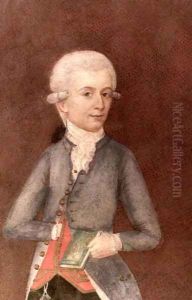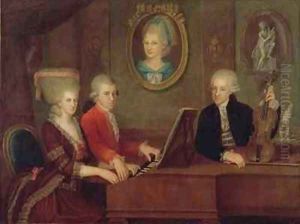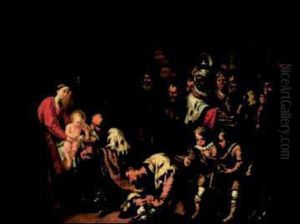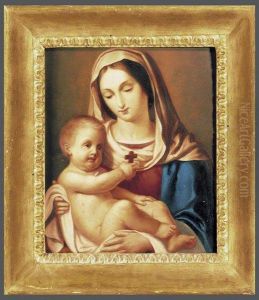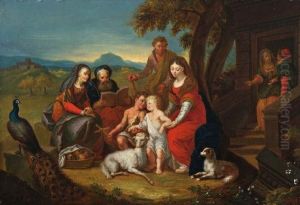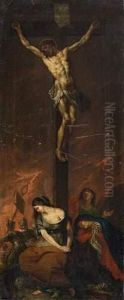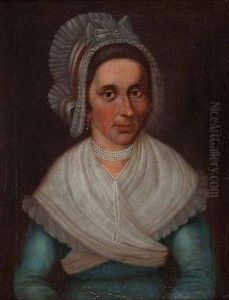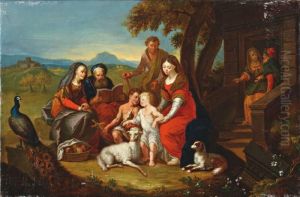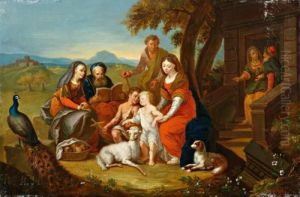Johann Nepomuk della Croce Paintings
Johann Nepomuk della Croce was an accomplished painter of the late Baroque period, born on August 7, 1736, in Pressano near Trento, in what is now Italy. Despite his birthplace, he is often associated with the Austrian school of painting, as his most influential period of work occurred in the Austrian territories. Della Croce's artistic journey began under the guidance of his father, Giuseppe Antonio Croce, who was also a painter.
In pursuit of his art education, della Croce studied in Salzburg under the tutelage of Paul Troger, who was a prominent painter of frescoes and altarpieces, and a key figure in Austrian Baroque art. Influenced by Troger's style and the broader currents of European art of the era, della Croce developed his own distinctive approach, which combined vibrant colors with dynamic compositions.
Della Croce's work was marked by his exceptional skills as a portraitist. He painted portraits of many significant figures of his time, including royals, church dignitaries, and members of the nobility. His portraits were celebrated for their ability to capture the character and essence of the sitters, a quality that made him a sought-after artist among the elite.
Apart from portraiture, Johann Nepomuk della Croce also created religious works, including altarpieces and frescoes for numerous churches. His religious paintings often reflected the transition from the late Baroque to the early Neoclassical style, blending dramatic effects with a sense of clarity and simplicity.
Despite his success, there is limited documentation on della Croce’s personal life, and many details of his career remain obscure. However, his legacy is preserved in the works that survive him, primarily found in Central Europe, which continue to be studied and admired for their artistry and historical value.
Johann Nepomuk della Croce's career spanned several decades, and his influence extended to his pupils, who carried on his stylistic traits. He spent the latter part of his life in the city of Burghausen in Bavaria, where he continued to paint until his death on March 4, 1819. Della Croce's contributions to Baroque and early Neoclassical painting remain a significant part of European art history.
